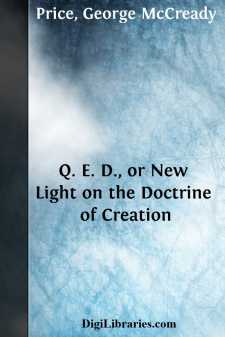Categories
- Antiques & Collectibles 13
- Architecture 36
- Art 48
- Bibles 22
- Biography & Autobiography 813
- Body, Mind & Spirit 142
- Business & Economics 28
- Children's Books 15
- Children's Fiction 12
- Computers 4
- Cooking 94
- Crafts & Hobbies 4
- Drama 346
- Education 46
- Family & Relationships 57
- Fiction 11828
- Games 19
- Gardening 17
- Health & Fitness 34
- History 1377
- House & Home 1
- Humor 147
- Juvenile Fiction 1873
- Juvenile Nonfiction 202
- Language Arts & Disciplines 88
- Law 16
- Literary Collections 686
- Literary Criticism 179
- Mathematics 13
- Medical 41
- Music 40
- Nature 179
- Non-Classifiable 1768
- Performing Arts 7
- Periodicals 1453
- Philosophy 64
- Photography 2
- Poetry 896
- Political Science 203
- Psychology 42
- Reference 154
- Religion 513
- Science 126
- Self-Help 84
- Social Science 81
- Sports & Recreation 34
- Study Aids 3
- Technology & Engineering 59
- Transportation 23
- Travel 463
- True Crime 29
Q. E. D., or New Light on the Doctrine of Creation
Categories:
Description:
Excerpt
I
MATTER AND ITS ORIGIN
I
When we were told by a prominent scientist just the other day that "electricity is now known to be molecular in structure," it almost took our breath away. And when we were informed that certain well-known chemical elements had been detected in the very act of being changed over into other well-known elements, with the prospect of such a transformation of the elements being quite the normal thing throughout nature, the very earth seemed to be slipping away from under our feet. Some of the closely related discoveries, such as the fact that the X-rays show a spectrum susceptible of examination, were not so disconcerting in themselves; but the marvellous pictures of the structure of the atom elicited by these discoveries made many good people almost question whether our venerable experimenters had not been indulging in pipe dreams amid their laboratory work.
Do we, then, begin to understand the real composition of matter? Does it have component parts, in the materialistic sense; or is what we call matter only a mysterious manifestation of energy? And if the latter be our answer, can we hope to settle the problem objectively and so conclusively that it will stay settled? In short, do we, regarding these border-line subjects between metaphysics and natural science, know anything more than our fathers and our grandfathers?
It will be convenient to consider these problems under two heads: the composition of matter, and the origin of matter.
II
1. It was long ago recognized that matter must be composed of particles which are driven farther apart by heat and are brought closer together by cold, thus laying the foundation for the theory of the molecular composition of matter. But not until the time of Dalton, about a hundred years ago, was it proved that the molecule itself, the unit of physical change, is capable of definite division into atoms, the units of chemical change. This conception of the molecules and atoms as the ultimate units of which matter is composed maintained its place until the discovery of radioactivity and its associated phenomena, about 1896; since which time we have definitely ascertained that even the atoms are separable into still smaller units, and that possibly these units are all alike. On this last possibility, it would surely be a most amazing fact if such multitudinous "properties" of bodies could be produced merely by variations in the arrangements of these ultimate units into atoms, or in some other way which produces vast differences in properties by combinations of units that are nevertheless mere duplicates of one another.
As hydrogen is the lightest of the elements, it has been a favorite theory with scientists that the various elements are all composed of combinations of hydrogen atoms. But since many of the elements have atomic weights which cannot be made exact multiples of that of hydrogen, it has been felt that there must be some other smaller unit than the hydrogen atom; or else that these hydrogen atoms themselves change in weight when they combine to form other atoms....


